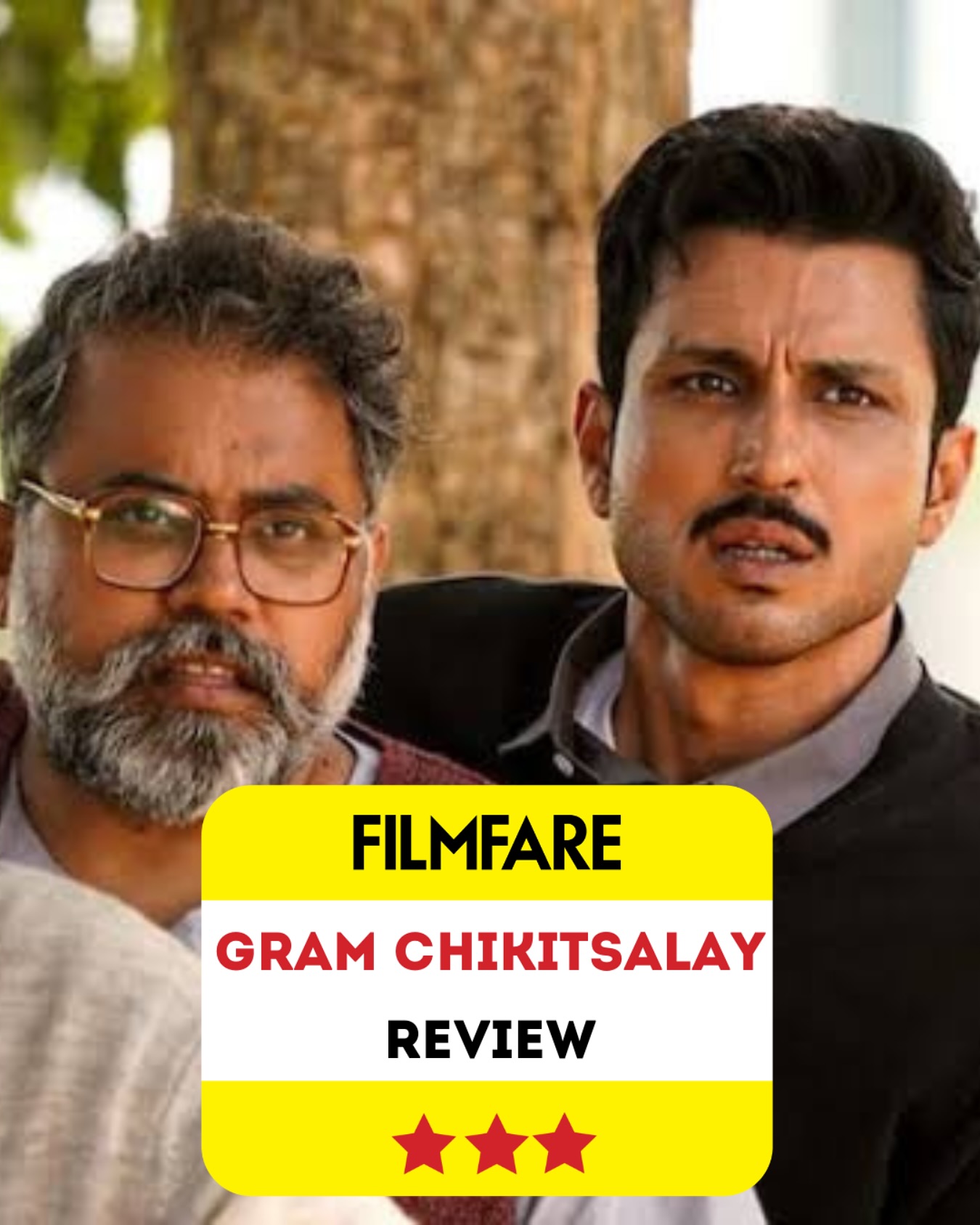Filmfare Review: Gram Chikitsalay In Honest Spotlight
Balanced review: solid performances and setting, yet script and structure lacked spark!!

Image: Instagram
Filmfare’s latest review of Gram Chikitsalay has sparked conversations among cinephiles and casual moviegoers alike. The review, penned by critic Devesh Sharma, delivers a balanced take on the film, lauding its earnest performances and authentic rural setting while critiquing its simplistic script and predictable structural choices. With a rating of 3 out of 5, Filmfare’s commentary proves once again why it remains a cornerstone of film criticism in India.
Strong Performances And Authentic Setting
Right from the opening lines, Sharma’s remarks highlight the film’s undeniable strengths. The review commends the cast’s sincere portrayal of their characters, underscoring that the performances breathe life into the story. Set against a backdrop that vividly captures the essence of rural India, Gram Chikitsalay stands out with its authentic locations and atmosphere. This visual and emotional authenticity has resonated strongly with audiences who appreciate films that connect deeply with their roots.
A snapshot shared via Filmfare’s official Instagram account – available here (https://www.instagram.com/p/DJesgPtTszX/) – visually reiterates these qualities. The Instagram post shows a still from the film that encapsulates the rustic charm and raw, unpolished energy of the narrative world. Such imagery reinforces the review’s praise, offering viewers a glimpse into a film that thrives on real performances rather than elaborate, studio-polished setups.
Structural Flaws And Script Issues
Despite the strengths, the review does not shy away from highlighting areas where the film falls short. Sharma points out that while the performances and setting are laudable, the film could have benefitted significantly from tighter writing and a more innovative structural approach. In a cinematic landscape where storytelling is rapidly evolving, Gram Chikitsalay’s approach to its narrative structure was found lacking the originality and depth that modern audiences expect.
The critique is measured and clear: the film’s narrative, although heartfelt, sometimes drifts into predictability. Sharma suggests that with a more streamlined script and a bolder stylistic framework, the film might have reached a higher echelon of storytelling. It remains a reminder that even films with strong technical and performance elements need a compelling and well-crafted narrative to truly captivate their audience.
Filmfare’s Enduring Credibility
Beyond the specifics of Gram Chikitsalay, the review also serves as a testament to Filmfare’s longstanding reputation in the world of cinema. With decades of experience in critiquing and celebrating Indian films, Filmfare has built its authority on a foundation of critical integrity and a commitment to insightful film analysis. Its reviews are often a barometer for both industry insiders and audiences, and this latest assessment is no exception.
By objectively weighing both the merits and demerits of Gram Chikitsalay, Filmfare continues to maintain a balance between celebration and constructive criticism. This approach not only enhances the credibility of the review but also provides filmmakers with valuable feedback that could shape future endeavors. It is this tradition of honest and reflective criticism that sets Filmfare apart in an era where film reviews can sometimes veer into unchecked hype or overly dismissive tone.
Audience And Critical Reception
The mixed response to Gram Chikitsalay has stirred discussions online, with many viewers echoing the review’s sentiment. Social media platforms have seen a variety of reactions, ranging from applause for the film’s authentic portrayal of rural life to disappointment over its narrative shortcomings. The dialogue underscores the relevance of such balanced reviews in a time when every new release is scrutinized from multiple angles.
Filmfare’s review, therefore, does more than just rate a film; it invites audiences to engage with the work on a deeper level. By acknowledging what works and what doesn’t, Sharma encourages viewers to appreciate the artistic effort behind the film while also recognizing room for improvement. This has sparked conversations about the evolving standards of Indian cinema, where traditional storytelling meets modern expectations.
In conclusion, Gram Chikitsalay, as reviewed by Filmfare, emerges as a film with notable merits in its performances and setting but ultimately misses the mark with an unrefined narrative structure. The rating of 3/5 reflects a measured response—one that appreciates the film’s heart yet calls for a bolder creative vision. As Filmfare continues to set the benchmark for film criticism, its reviews remain a valuable resource for audiences and filmmakers alike.
While Gram Chikitsalay may not be a perfect film, it is a reminder of the challenges and triumphs inherent in the art of filmmaking. Its honest portrayal of rural life and the earnest commitment of its cast make it a film worth watching; however, the critique also serves as an important lesson in storytelling craftsmanship.
Ultimately, this review captures the dynamic interplay between artistic vision and critical reception, inviting readers to reflect on what makes a film resonate and where it might fall short.
Read full bio of Glendon Moss







